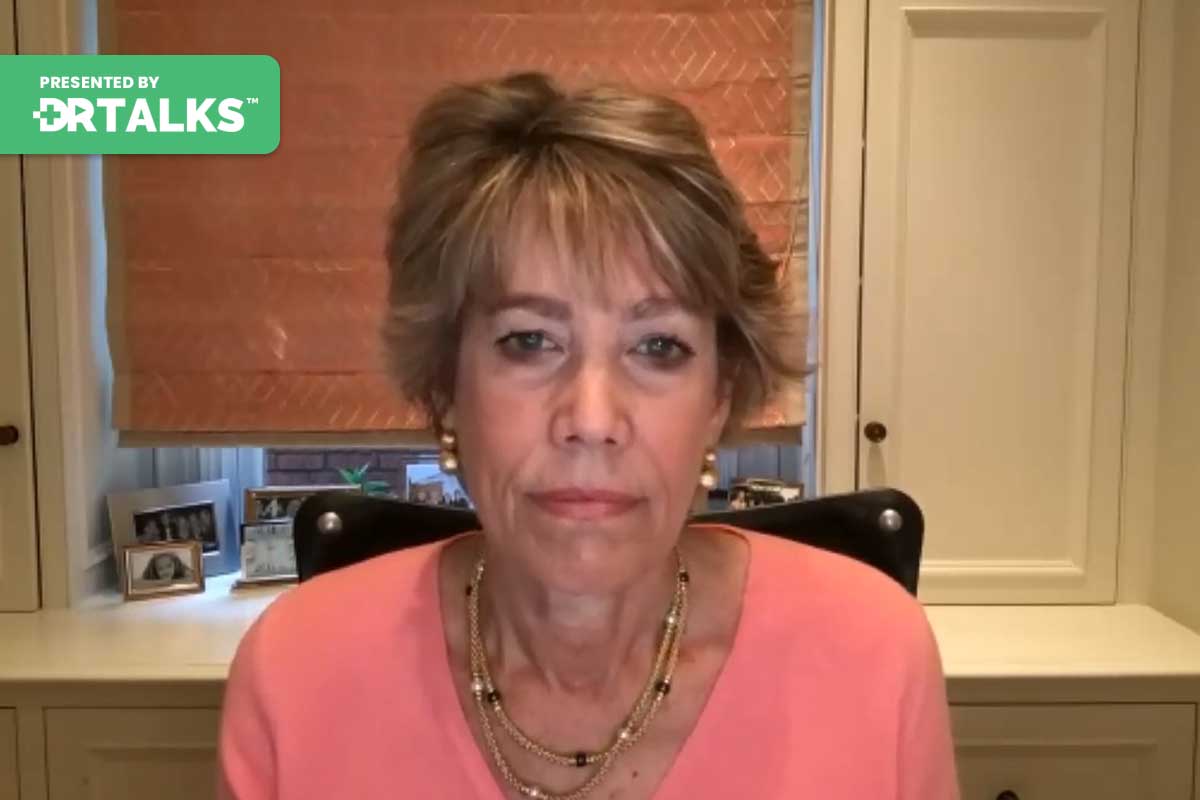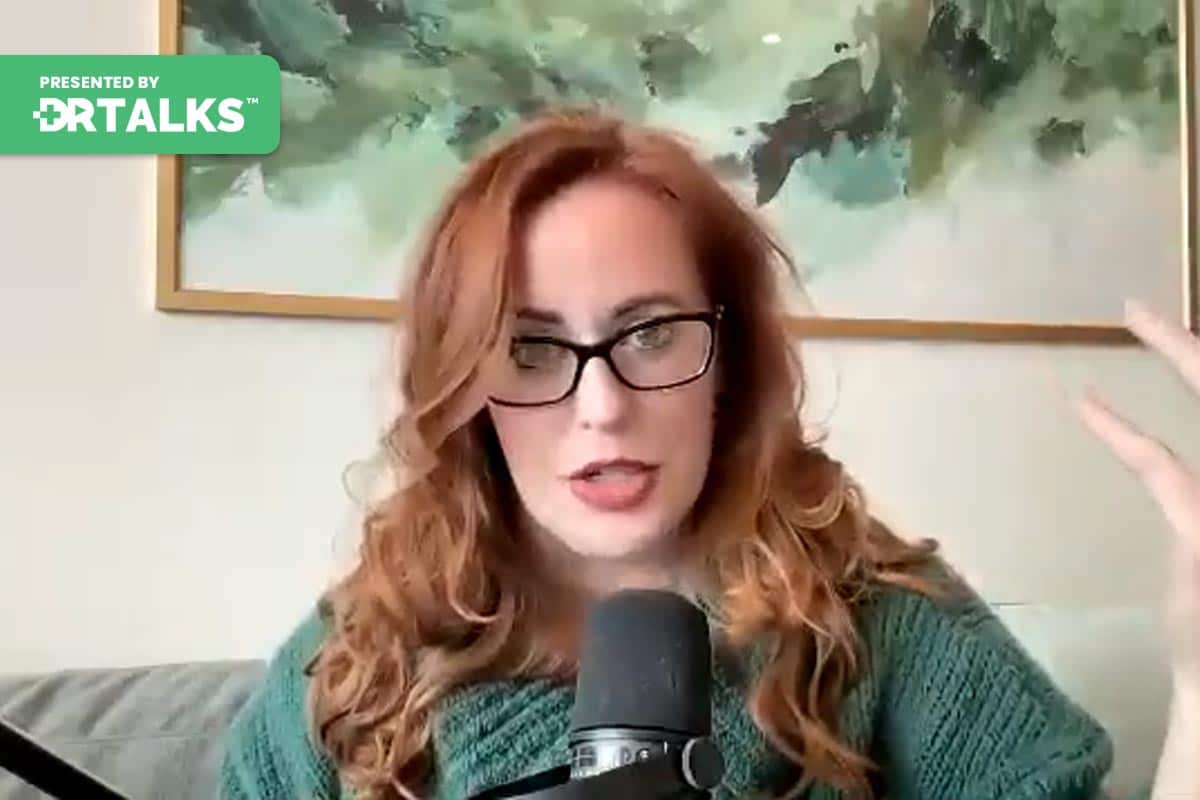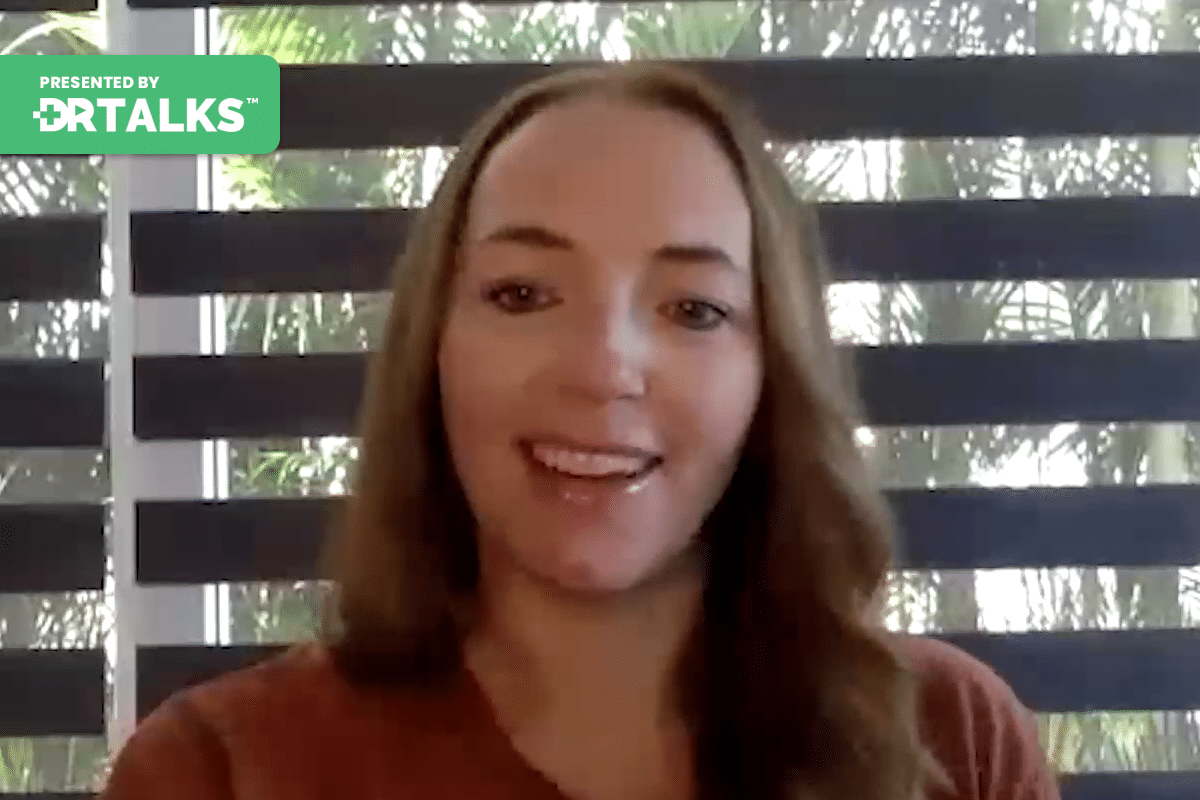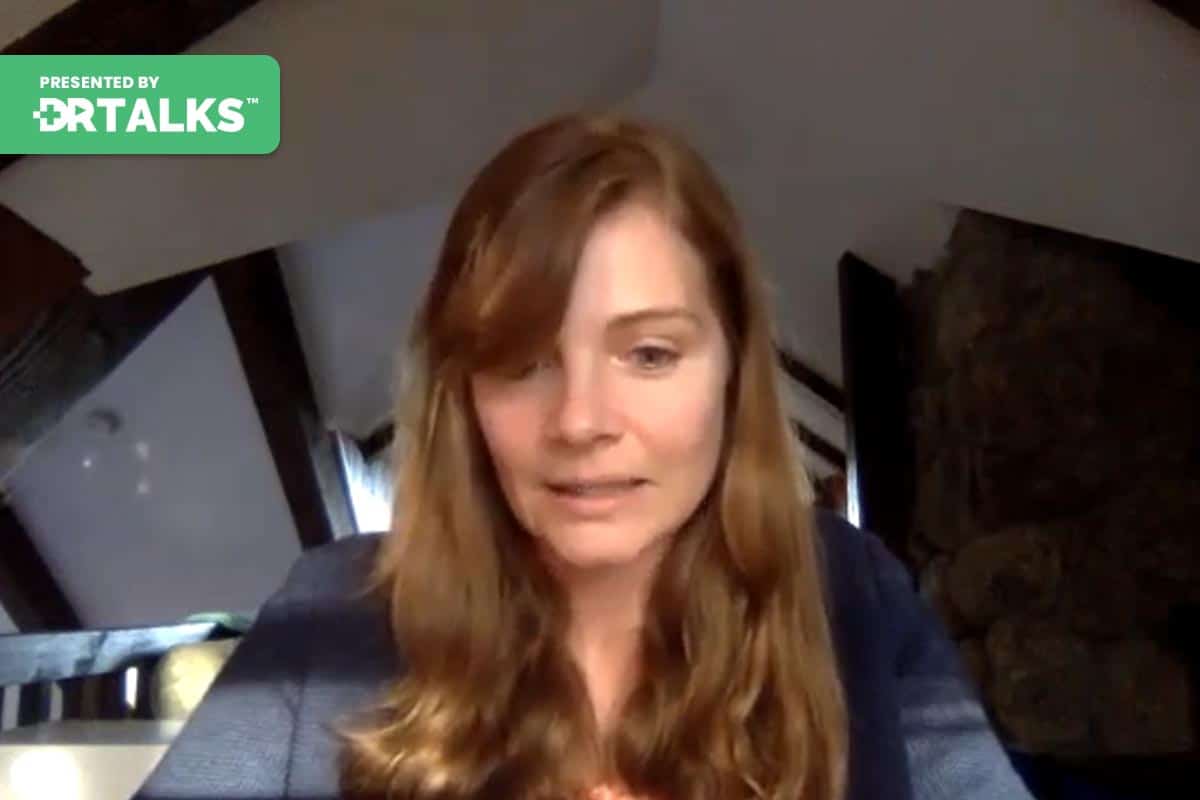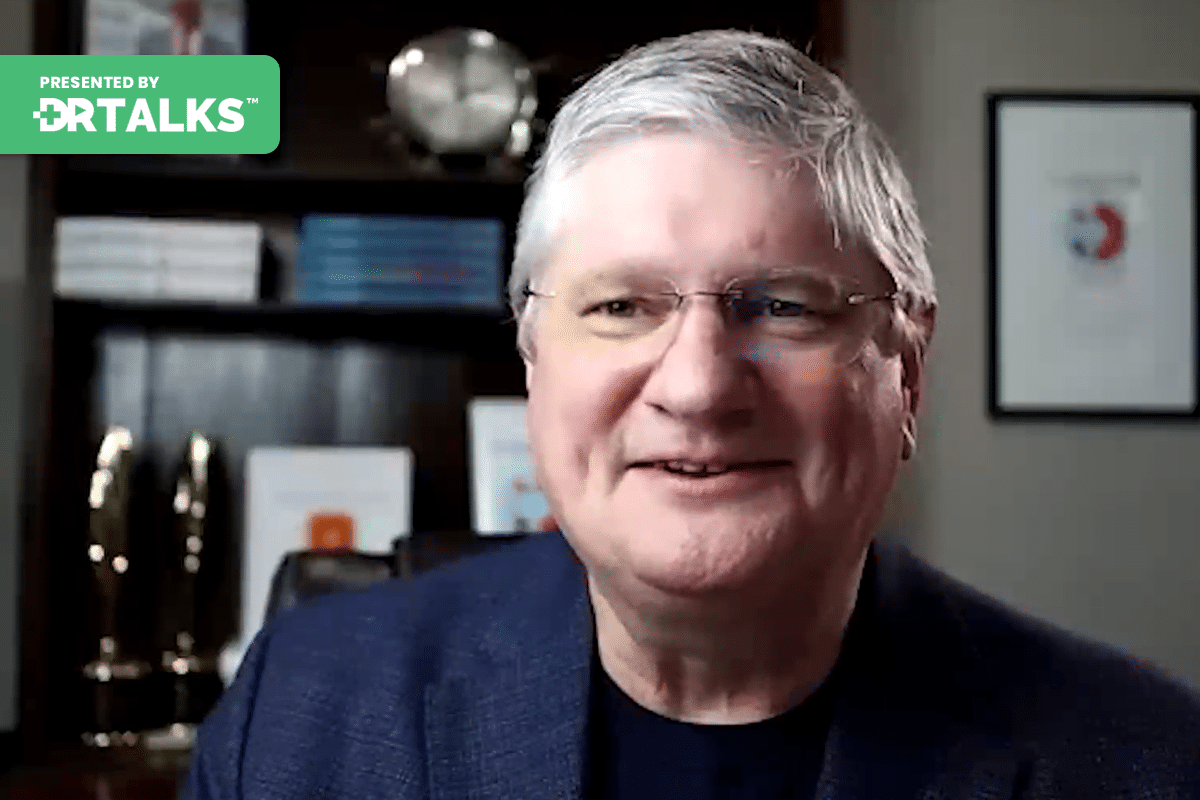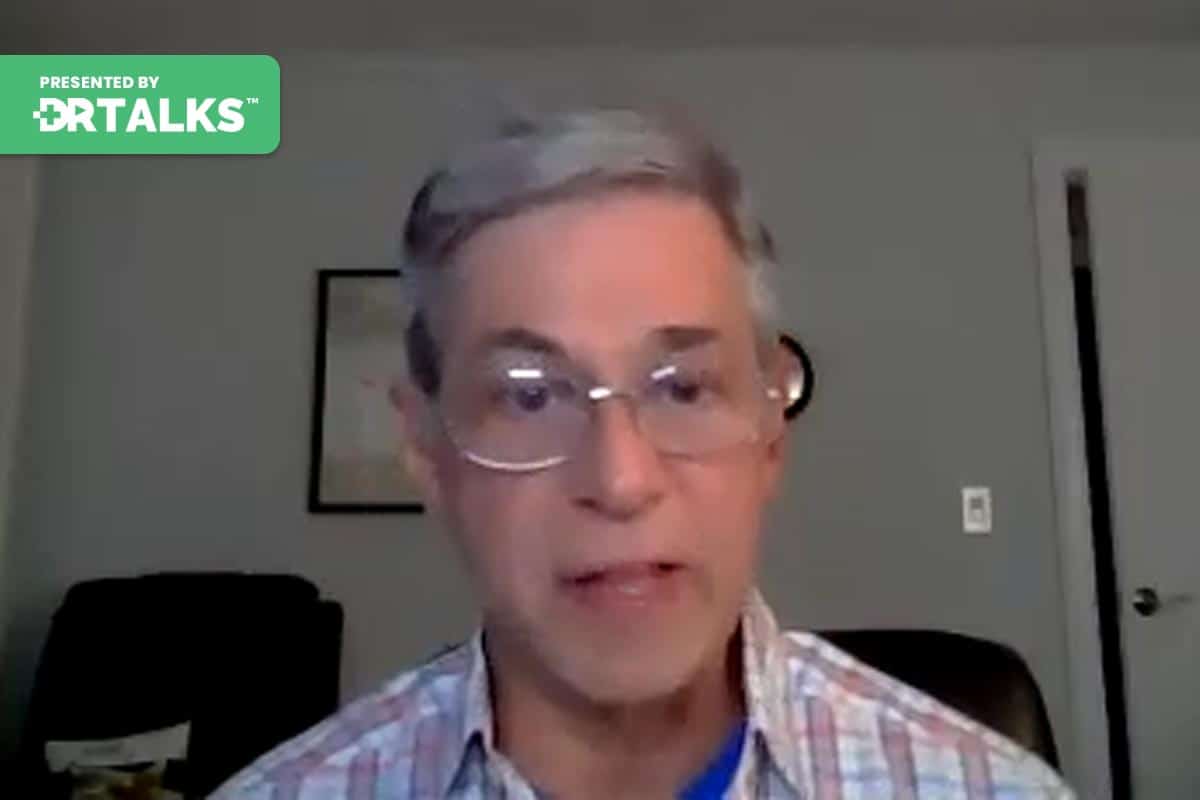Join the discussion below

Dr. Tom treats some of the sickest, most sensitive patients suffering from chronic Lyme disease, tick-borne co-infections, mold illness as well as children with infection-induced autoimmune encephalitis (PANS/PANDAS). He focuses on optimizing the body’s self-healing systems in order to achieve optimal health with simple, natural interventions; utilizing more conventional approaches... Read More
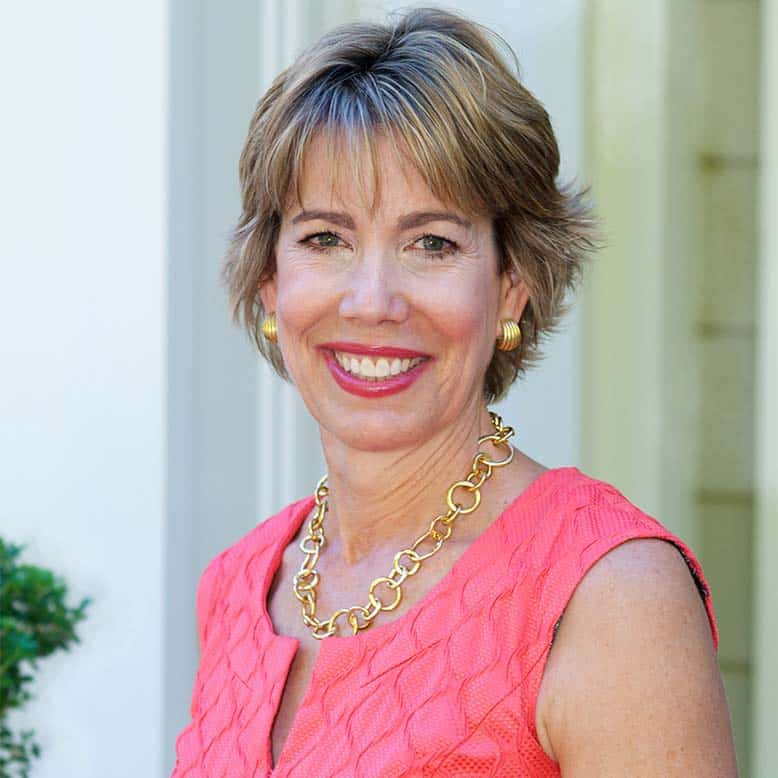
Phyllis’ daughter’s battle with Lyme and her journey back to health inspired the creation of LymeLight Foundation. Grateful for the financial means to provide her daughter’s lifesaving medical treatment, not covered by insurance, Phyllis met many parents who were forced to decide between feeding and housing their families and treating... Read More
- LymeLight provides grants to children and young adults in financial need for treatment of tick-borne illnesses
- How we can prevent the long-term effects of Lyme disease through public awareness and education
- Learn the different ways you can positively support the Lyme community
- Learn how you can support LymeLight Foundation so they can provide more support for the Lyme community
Thomas Moorcroft, DO
Everybody. Dr. Tom Moorcroft here. Back again with another episode of The Healing from Lyme Disease Summit. And this is a really fun interview for me because I want to introduce you guys to Phyllis Bedford from the Limelight Foundation. And one of the most important things to me is that people have access to the care that they need and they deserve. And so much of what we’ve talked about is like, hey, maybe you get in, you need to, you know, understand about Lyme, understand about the co-infections. If you think you have it, you need to work with a health care practitioner. Maybe you need to actually get the labs that help you clarify your diagnosis. Is it one or the other or is it something that we weren’t even thinking about? The problem that so many people run into these days is sometimes they can’t afford that. And one of the things that I’ve seen in my practice over the years is how organizations like Limelight Foundation that are here to provide support for, you know, diagnosis, treatment, access to care for patients has dramatically changed people’s lives.
And we have many people in our practice that and I’m thinking of someone in particular who was wheelchair bound when they came into our practice. They basically scrounged every little bit of money that they could to get in because that’s how important it was that the healing was. And the problem was once they got going, we were supporting them as best we could, but they ran out of money really quickly and they were really distraught. And I said to them, I was like, What do you know about Limelight Foundation? And they had not heard about them. And that my heart sank and I said, All right, let’s figure this out now.
Get your application and we’ll support you with the letter. They received a grant from Limelight Foundation, and now it’s like four or five years later, no wheelchair, completely fine, no symptoms. The last couple of years. That’s the super fast story. But Phyllis Bedford, I wanted to just say thank you and to you and your family and Limelight Foundation for creating that opportunity for more than just one person in our practice and people all over the country. And I wanted to welcome you and feel like we really need to let people know what Limelight Foundation really is all about. So thanks for joining me.
Phyllis Bedford
Oh, gosh. Well, thank you for having me on. And what an introduction shout out to Limelight Foundation. So thank you. It’s an honor to be here.
Thomas Moorcroft, DO
Yeah. And so one of the things we’re going to talk about, because this is sort of our public service announcement. Right? And at the end, guys like, you know, like I always like to let you know what we’re going to be doing in one part is we’re going to let if you’re in need of support, we’re going to let you know how to get support. And if you happen to be someone who’s at a place where you have means to support other people and you don’t know exactly the best way to do it, we’re going to talk about that as well, because one of the unique things, Phyllis, about Limelight Foundation is you guys are basically if we donate to Limelight right now, 100% of our donations go directly to supporting other people. And that’s through the charity of donors that make that possible. So before we dove into all the nuts and bolts and the nitty gritty, why would you what brought you to limelight? And in creating this whole thing and being an advocate for patients who are just underserved and don’t have the resources that we would like to have in order to access care.
Phyllis Bedford
Yeah, great question. And so we came Limelight Foundation was started really through our journey of healing from our daughter. Our oldest daughter was diagnosed with lying when she was in her senior year of high school, and she, like many patients, I’m sure, was on the what I call the doctor merry go round doctor to doctor the doctor not getting a diagnosis, not getting treatment, actually getting random diagnosis. And it’s a long story. I won’t go into that, but we ended up getting a diagnosis, thank goodness, when she was in her senior year. And like probably a lot of people listening, you know, you think we’ve got a diagnosis, yay, now we can get treatment. And you do. You go and you proceed on with treatment only to find out your insurance will not cover the cost of care. And that was just eye opening to us. What I mean, we have a disease that insurance won’t cover the cost of care. That was almost like a slap in the face after everything you’ve been through.
So we were in the position that we could afford to, to pay for Sarah’s treatment. But we met many, many families along the way who just were not in the same position. And it was heartbreaking to be in the Ivy lounges or just in the waiting rooms. And here, literally over here, families trying to figure out how they could get care for their children. And there were stories of, you know, we can rack up credit card debt, we can move in with your parents, we can sell our house. One family was talking about sleeping in their car. And really, you just sat there thinking, we’ve got to do something as Sarah got better. We were actually out to dinner with another family who’s had a similar situation. Daughter sick, could afford care and really limelight Foundation was sort of born over that dinner of well we’ll just form an organization a nonprofit and our goal was really small. We could just help a few kids get treatment. Would that be great? And there’s a much longer story, which I won’t go into, but that was the genesis. That was back in 2011. And that year we raised $40,000 and did four treatment grants. And now fast forward to 2020 while going through 20. Well, I can go through our figures and 2023 right now we have distributed $8.4 million and we’ve helped 1200 individuals in 49 states.
Thomas Moorcroft, DO
Okay. So that’s insane, right? Because I’ve just I have your little thing up on the side because I love the little, you know, the letters of introduction you guys signed and it’s like it was 8.3, now it’s 8.4. And you know, when we’re looking at our kids who have it and our young adults who have don’t have the access to care, I mean, it is amazing that they can qualify for I think it’s up to $10,000 in financial support at the moment.
Phyllis Bedford
Yep, that’s correct.
Thomas Moorcroft, DO
So we’re so I know that the need is there. How are you guys actually getting this money? Like, what are you guys doing? Because I think one of the things I love to share, Phyllis, is and I talked to Tim Sahadi from Global Lyme Alliance and a whole bunch of other people where we’re letting people know that there are actually people out there to help them. Because I think that so many of our patients are like everywhere I turn, like you highlighted it so well, everywhere they turn, the system seems to be set up against them.
And we’re here to let you know that while that external appearance may be there, there’s also other possibilities out there. Like there are places like the Limelight Foundation that are here advocating for you and your kids. So, I mean, we’re d but so that to me is hopeful where I get all the support though. I mean, you know, is it just private people? Is it bigger groups or how’s this all come together?
Phyllis Bedford
Well, let me I just want to say one thing first. But you touched on something that was so a pair. Everything we try to do at Limelight is full of help. You know, every colors we use, all of our publications, everything you see, we don’t go into the dark side of line. We go into how can we lift you up and hold and help you? And that is something that is so, so true is that often people are so grateful for the financial support, of course. But equally as important is the validation of We believe you. We know that you have this disease and we believe we know that you are in a tough spot right now and we’re going to help you and that validation and that hope. And we have a wonderful grants coordinator that our her name is Kate Nicholl. Who are Grant recipients just love. And she’s just as well full of hope and this wonderful person. So I think as soon as you get that grant, you’re like, oh, I mean, I can breathe again. We literally get notes that people say, I can now breathe again. You have somebody down this rabbit hole, but you have thrown us a lifeline. So that is so important to think of is the hope factor. And, you know, people get better, right, when it’s hopeful and you have to have hope. But how do we raise funds? That’s very interesting. When we first started in 2011, we had literally little plays and and just raised funds that way. Like we just have fundraising events. Then we migrated to an event called Dart for Art. And if anyone goes to our website Limelight Foundation dot org and looks on our events, we just literally two weeks ago just had our 2023 event and we’re back to the live format. After three years of virtual and hybrid, this is our biggest now our biggest fundraising event.
And again, this is a hoot. This is where we get this is a beautiful event because we get artists to donate art. We create an art gallery and then guests come and they dart mean run for the art. They know they’re going to get a piece of art by attending this event. And the fun thing is for them to figure out what piece of art they want. It’s random when they’re going to run. It’s too confusing really to go into. But what I want to say again is the hope artists are giving their art directly for healing. People are learning about Lyme at this event and then leaving with this beautiful piece of art. So again, it’s and I always have a grant recipients speak. This year we had Tyler Taylor she was fantastic from the east Coast. We actually recorded her for videotaped her for 2020. And, you know, she finally got to do it in 2023, come to the event and so forth and so that. So our, our, our fundraising is part of our our I mean, limelight initiated events. But a big part is public. We are supported by the Steven and Alexandra Cohen Foundation. They have been with us and have been just terrific with support.
I mean, a shout out to them. They have done so much in the Lion community for so many organizations. And then, like you said, donors, donors, donors, like maybe anyone listening who wants to help children suffering with Lyme disease. We had and we still have an organization named the Laurel Foundation, and it was wonderful. They came in and said, we want to offset the costs, so we want to underwrite all your costs. So that’s why we can make the statement that you just said. There are, there are. They’re taking care of our costs. So every dollar that we receive goes straight to our program, which is the treatment grants.
Thomas Moorcroft, DO
It’s just feels so good having this conversation because I just I just it’s like so many people and so many organizations that many people probably don’t recognize are actually supporting that wave of healing, of awareness, of support that we all feel and like. We talked in so many of our interviews about the importance of community, feeling alive, feeling connected. So everyone, I want you to really just take it. But like literally as I’m talking like my hair is standing up and this is one of the things I’ve wanted to really get through in the entire summit is to say, okay, get in the moment and enjoy these things. Get back to your passion. Because for me, I’ve had a lot. I’ll be completely transparent because I always am. I’ve had a really stressful week. I’ve had patient interactions that are tough because I deal with a tough patient population. I’ve had other things that go on that I would prefer not have happened. My family has been traveling and one of our dogs got, you know, loves to have a little bit of loose bowels when the family’s traveling and I’m home alone. So it’s like you finish some interviews, you go up and there, you know, it’s been one of those where everything kind of feels like it’s on my shoulder. But then I have this conversation with people like Phyllis where you’re like, This is so cool. And one of the things I think in human nature is we downplay the cool stuff and we kind of amplify the negative, right? And that’s a protective mechanism. But as part of our healing from Lyme Disease Summit, what I want you to really do, like I, I’m so excited about what you just said to Phyllis and I’m just like, feeling it because that is so energizing.
You can even hear in my voice. It’s like, and now it’s like, funny as I’m talking about it, you get a little sweaty and everybody wants a little bit of like that might even be some anxiety. I’m like, No, no, no. That’s called excitement, right? So we’re relabeling things. We’re getting in touch with the hope out there and realizing that, you know, it’s kind of like that ripple effect because I can imagine maybe somebody knew about Limelight, fellas, and then they go, but then they’re oh, I know that there’s some donors is probably one or two big ones, but then you’re like, But there’s this group that’s been with us forever, and then there’s this group that allows us to take any donations. I mean, it’s like there’s a ripple of people supporting us, everyone. And that’s the message that I really wanted to get through, you know.
And then one of the things when we were talking earlier, Phyllis, right before you hit record and I said we should probably start there, and I completely forgot when we got going because I was so excited to hear your story and just let you share is you were saying it’s like kind of like because the thing is some people after what I just said and maybe what you said is like, well, where do I fit into this? Right. And you said there’s really kind of it’s funny. I’m not a lot of people talk the way I talk. I think a lot of times that it’s like but I’m always like, there’s two groups of people, you know, and you kind of touched on that. And so maybe you could kind of rehash a little bit of what we were talking about before and talk about that. The groups of people that you see and where people are at in their journey so that they’re not trying to tell everybody they got to be here at a different place than that where they are.
Phyllis Bedford
Yeah, right. Well, what I was saying was what we have found in our experience and I’m sure you if you if you said this, you thought the same thing, is that there’s and both are valid. There’s sort of two groups of people as you recover from Lyme or as you are recovering that you either want to leave the Lyme space. You you just you just for your personal healing. You’ve got to just step away from it and say, that was a horrible couple of years, whatever it was. And I just I just need to go back to my regular life or I just need to disengage. Then there’s the other group that is like that was a rough spot, but I’ve got to do something with this. I mean, I’ve got to validate that what I just went through the last two to 5 to 10 years and I’ve got to use this experience to benefit others. And, you know, it’s so interesting. I think what you were saying, Tom, is we all have God given gifts, right? We all have a sphere of influence. And how can you use that if you choose to go down that path? How do you use what’s happened with you with lyme to benefit another and another way to say it is what is your passion? So what is your passion? That, that. And you can augment your Lyme experience or go towards the passion and bring Lyme with it. So that’s really what happened. You know, with Limelight Foundation, I think that happens with so many doctors that are out there, so many advocates and that’s another thing.
We all have different gifts. So, you know, Limelight Foundation, that just seemed the path that we were on. But for everyone listening, there’s all you know, maybe you’re you’re so busy, but you could donate some money to one of the Lyme organizations or, you know, maybe you’re an artist and you can donate to the dart for art. I mean, there’s so many ways to plug in. So that’s what I always encourage people to do, is if that’s the path you’re on, get engaged because that feels good. It feels good to help another and it feels good to build community.
Thomas Moorcroft, DO
Yeah. You know, it’s so interesting, too, because I was just thinking as you’re talking to us, maybe the thing you do is just share your story with someone else, whether it’s in person or in a phone call or social or whatever your thing is. Because so many of my people come in and they’re like, especially the early ones now, we’ve talked so much about early diagnosis and access to care and treatment is critical because we can minimize or alleviate chronic Lyme. Like I would love to just say like if we got everybody early diagnosis and treatment let’s eradicate chronic Lyme but we can’t do that without awareness.
But maybe you don’t have the time or the money, but you take 5 minutes one day to share a story. Because I have so many patients come in like, Oh, my neighbor, this person from my town, or I ran into a friend from is actually how I became a Lyme doctor. I treated I was I got better and I was just doing my osteopathic treatments in the office and doing a little nutrition stuff. And then somebody I felt like they were they felt weird and they felt infected because my mentors had said, hey, you have another, you know, your intuition and your hands. You can learn to feel the difference between Zoloft cancer and Lyme disease. And I guess you really could because I was like, oh, I think you have Lyme disease. Didn’t know anybody to treat treated got the test, started treating her and she started getting better.
What was interesting, she ran into someone at Whole Foods and would just like they were just talking they hadn’t seen each other in six years and this other girl would so debilitated and they just got to they just were catching up. And with the story, the girls are like, That’s not exactly what I have, but it sounds like kind of what I have. And go see more craft because he knows and this is literally like my second Lyme patient and thankfully after like a year and a half and another wheelchair story she’s out and fine and you know has a business, has a kid and everything’s great. But what’s beautiful is and then after that, like, of course, that’s all I ended up doing because one person told another, told another, told another. So we can we still don’t we don’t need to do social. We don’t need something crazy. You can, but it’s just share your experience with someone else so they have the understanding and one other thing you said, Phyllis, earlier, too, that was really interesting is to me is when you’re in that group where you’re suffering with Lyme and you wake up and you’re like, Today’s a shitty day. I feel like crap. Lyme sucks ass, my line sucks. You’re like, You know what? That’s valid and oh yeah, oh yeah.
Phyllis Bedford
Oh, definitely. I mean, that’s the other thing is, you know, we’re in a battle, right, where we when we have Lyme, we are in a battle. And I think you and you’re absolutely right. I mean, you know, I think it’s important to recognize how difficult this journey is. I mean, it we can’t minimize it by saying, you know, I remember one time reading something about make sure you move every day. And I was looking at my daughter who I mean, was I’m even thinking of moving, you know, from room to room. But, you know, I think that’s absolutely valid is to realize, you know, it is you’re going to get there, keep on fighting, keep on doing what you need to do. Keep looking for other avenues of, you know, keep up with your detox, learn about detox, learn more about your disease. But also just look forward to and I’m going to get to the other side, whatever that means. And that may not mean and we fully say this to our grant recipients is we recognize that the other side might be, I’m not in school now.
I’m in school. Right. You may not be 100% symptom free. Very few of us with Lyme right are 100% symptom free. But you’re better. You’ve gotten off the sofa so far. So yeah, I think I think that’s again with our grant recipients and you touched on this community. We do a lot of we have a grant recipient reception, you know, once a year and through the pandemic, we’ve had to have this obviously be virtual. And that has been and we’re continuing it because we can have everyone from all state, anyone who wants to participate can participate. And that sense of community that afternoon, I tell you, we all end up in tears.
And it’s because some of these kids. Right. Don’t even know one another kid like them or another kid that has maybe been diagnosed yet. Maybe they have a misdiagnosis, who knows? But they get to see other kids and we encourage them if they would like to. If both sides are willing to share contact information. Community is really huge, huge, huge, huge. And I some of our older particularly female grant recipients men are not as comfortable with this on social media all the different communities that are on social media, Instagram, you’ll go on and someone will share and then someone else will say, That’s how I’m feeling. And then someone else will say, Go you, yeah, you go do that. And I’m, you know, it’s amazing having someone else walking in the same shoes. You’re walking in is so edifying and so helpful as well. And just to have another person cheering you on.
Thomas Moorcroft, DO
It’s just so important and I think one of the things and you just I took a little note here because one of the things we’re doing is like really making sure that not only are we talking the talk, but in the summit, people are having the experiences of this and one. And so one of our guided experiences will kind of touch on what you just touched on, which is I think a lot of people in the positive mindset, health, healing mindset community are like don’t focus on are really even sometimes that it goes as far as don’t even acknowledge some crap is going on in your life. And I’m like, well, that’s fighting reality. You know, you do have a crappy day and it’s to validate that you’re having a crappy day and also have the personal strength and community to support you to look at the healing possibilities. So I just think it’s so important where it is okay to say that we’re having a bad day. And it’s also even though that’s not your fault, it is your responsibility to start to look to the future and to find that passion and that energy and to do that might just be laying in bed and relaxing and recovering, and tomorrow it might mean something different. So I just love the way you said it’s been. It’s so inspiring. Two things I want to really make sure we touch on and, you know, is, one, how to if people are, you know, who can apply for a limelight grant and like, how do they go about doing that?
Phyllis Bedford
Okay.
Thomas Moorcroft, DO
And then I’ll do number two after.
Phyllis Bedford
Okay. What would you want to say?
Thomas Moorcroft, DO
Both now the other one was if someone wanted to participate, support, limelight and provide donations, how do they do that?
Phyllis Bedford
Okay, both are through our website, which is great. So let’s take the grant piece first. So there’s it’s under our website Limelight Foundation dawg go to applying for a grant. And it’s literally an online process like, you know, kind of like applying to college. It’s a, it’s a form that you fill out and we have frequently asked questions. We, you know, it’s pretty self-explanatory how to do it. However, like I mentioned earlier, we have our grants coordinator, Kate Nagel is always available for an email, a phone call and a lot of people, you know, have questions along the way. A lot of the parents have Lyme as well and are, you know, can get confused. So I just want to say we are there to help you with any confusion.
So anyone, anyone through age 25 can apply. And, and I do want to say it is need based. So we are helping those that need it the most. So if you have if you come from an affluent family, that’s not the PD, but we’re awarding the grants to. So you you just apply online and we ask for letters of support. We ask you mentioned this, Tom, we ask for a doctor letter validating you, in fact, have and you do have to be diagnosed with Lyme and there’s all the who can support this on the website and then you submit your application. We have board meetings three times a year, so we choose applicants three times a year. And then you are awarded when we choose you, if you are chosen, you have, as you mentioned, $10,000. But we’re very careful. We don’t just send you a check for $10,000 and say, have a nice day. We actually start with $3,000, typically three or $4,000. And the reason is many fold. Number one, you touched on this Tom building community. We want to get to know you. You know, we want to know about you. We want you to know about us. We want you to have a support system. You know, Kate becomes and our whole board does becomes very familiar with all of our grant recipients. So you have an ally, you want to advocate in Limelight Foundation.
And another reason is just to make sure the funds for donors this is important, that the funds are going to what? To treatment. Right. And there’s on our website, it says what is covered by treatment, and it’s more than just treatment. For example, if you’re seeing a doctor out of state that is covered, travel expenses are covered. So you can read that section as to what is covered. The other thing that’s important to us is, do you have a plan? What is your plan towards treatment? And we fully realize that it may be a plan in its genesis. And we also we don’t dictate your plan. It’s like, what do you think your body, what is good for your family and what treatment modality are you going to utilize? And it’s interesting, I would say most of our grant recipients sort of go the holistic integrative route, not the straight antibiotic route, or they may start straight antibiotic route and then alter.
So it’s interesting for us to see what is working and we’re introduced to new new doctors, new treatments. It’s kind of interesting to watch that, too. So again, you are and you as a grant recipient of the grant family, you are in control where your partner. But we’re also validating and making sure that you’re staying on course and not, you know, not scaring off. Right. So that if that is that we we put other people that are not selected on a wait list and ask them, you know, why don’t you reengage with us? Let us know. Because, again, we would love to help everybody. I mean, I wish we had all the funding to help everybody.
And that’s another point. We help everybody that we have funding for. So if we had more funding, we could help more people. Which leads into your second question is right there. There’s a big donate button on our line like foundation about a dot org page. And we, you know, we welcome obviously we welcome all donations. And if anyone’s listening, you know, has a creative way of, okay, well, you know, I live in Texas and I would love to only help people in Texas or this is what I want to do, whatever, talk to us or I have this idea, I’d like to partner with you in certain way. So we really are open, you know, to keep on expanding Limelight Foundation’s reach and also new ideas. So anyway, that’s that. And again, as just to reiterate, every dollar that you give, whether it’s five, ten, a thousand, 10,000, a million, it’s all going to go to our grant recipients.
Thomas Moorcroft, DO
That’s so amazing, Phyllis. I mean, the way you guys set this up and the thing is, like long before I ran into your husband, Scott, and long before you and I met, I’ve had a really great relationship with your organization and it’s really through my patients. And this is the thing that’s so interesting is like, I would just fill out the letters and, you know, everybody’s like, you know, it it’s just so neat to see how you organize it so that you are creating the community of support, not just giving somebody because like if you were like win the lottery, how many of the people who win the lottery are like broke in like five or ten years because they they haven’t changed your mindset. They don’t have the support of someone with that level of means and they’re just going back to their previous baseline. What I love about Limelight it is an inspiration.
This community that brings people and checks in on them, that allows them to actually make the change, that allows that the up to $10,000 they get, which, you know, to actually go really far. And that’s the part. And then if you’re so as a recipient, you’re getting all that benefit. And then the other side of it is if you’re a donor, you know that 100% of what you’re donating is going to the people that you want to support. And that’s brilliant because I’ve thought about different ways to raise money for different groups, and if I want to do it through an event we’re doing, then I have to use a third party and they take all this money and I’m like, I just whatever percentage of what we just raised just got thrown away for just some website that’s going to run the. Now you guys have gotten rid of that.
You have someone specifically covering that. So guy like even if you’re giving like five or ten bucks or you give a dollar a month or whatever it is, or you just let someone else know it’s available. But all that money and effort is going into directly helping you or someone like you, which is just so amazing. So, Phyllis, thank you so very, very much for everything that you guys do as a physician and a father of a 13 year old to you know, it’s just as a parent leaving the doctor part away, seeing all these other families positively impacted by you guys and then meeting you and Scott, knowing who you are as people is like just touches my hearts.
And so honored to have you guys here. And I hope that we get a lot of people interested in applying for grants. And then also if anyone out there has the ability or, you know, someone else who has the ability and really looking to support an organization where they get their tax deduction. But then they also know that all the money goes to the people that you really want it to. Limelight Foundation’s doing that so thank you so very much for being here. Phyllis Oh, thank you.
Phyllis Bedford
I’ll come back any time. This has been really positive. Thank you so much and good luck with the summit and everyone listening. I hope you know, your healing journey is going well.
Thomas Moorcroft, DO
And everyone, thanks so much for joining us for this episode of The Healing from Lyme Disease Summit. I hope that you’ve been inspired and you do feel that positive vibe and you feel that hope and that groundswell of community behind you. And I know that we’re all at different places in our human experience, in our healing journey. I know that there are people like Phyllis and Scott Bedford who are and the Limelight Foundation and so many other people who support them and all the other people we’ve talked about that are here to support you. So thanks very much. We’ll see you in the next episode.
Downloads

